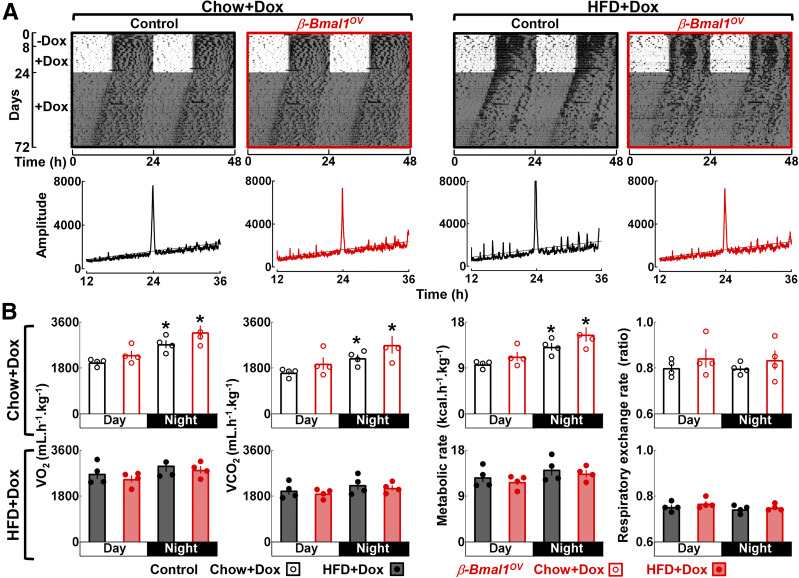Figure 2.
Bmal1 overexpression in β-cells does not alter global regulation of circadian rhythms in activity and energy expenditure in male mice. A: Representative actograms (double plotted) of locomotor activity in chow- and HFD-fed control (+/+Ins2rtTA/+) and β-Bmal1OV (Bmal1-HAtetO/+Ins2rtTA/+) male mice monitored for 8 days in a standard LD cycle without DOX followed by 16 days in LD and 48 days in DD with DOX administration (200 mg ⋅ kg−1 in food). Shaded areas represent periods of dark. Corresponding χ2 periodograms of activity recordings are shown below each actogram. In total, activity patterns were examined in n = 4 mice per genotype/diet. B: Average measurements of VO2, VCO2, metabolic rate, and the respiratory exchange ratio (RER) monitored over a 24-h period in chow-fed and HFD-fed control and β-Bmal1OV mice. Calorimetric recordings were made using a comprehensive laboratory animal monitoring system . VO2 and VCO2 levels were used to calculate the RER, and VO2 and RER values were used to determine the metabolic rate (kcal ⋅ kg−1 ⋅ h−1). Data are mean ± SEM (n = 4 mice per genotype/diet). *P < 0.05 vs. day cycle.

